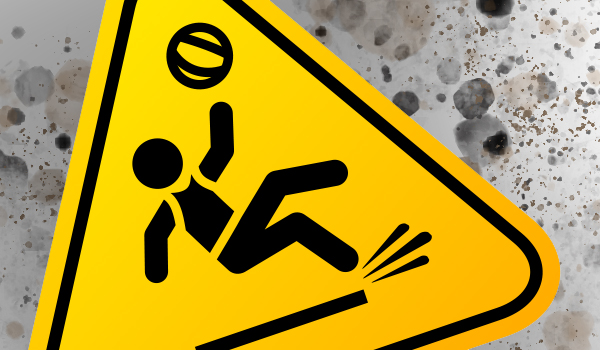
Have you ever watched a football game played in the snow or a baseball game in drizzly rain? In those conditions, you expect more slips, errors, fumbles, and falls. There’s nothing to blame except the weather, which is accepted as part of the game. On the other hand, basketball is a sport played indoors on a surface designed for athletics. It is tempting to think that everything should be perfect and constant. In reality, adverse conditions can exist that might cost the game, or worse, cause an injury.
Basketball players do not contend with rain or snow. Instead, their nemesis is often invisible and overlooked: dust. Sports floors that comply with ASTM F2772, DIN 18032, or EN 14904, are tested for an acceptable range of surface friction. Typically, the coefficient of friction falls between 80 and 110, which is optimal for gameplay. But these ideal conditions are associated with a clean court.
On a dirty court, a layer of dust and particulate debris will quickly erase the optimal surface friction. You can imagine the dust as microscopic marbles or ball bearings that move independently underneath a player’s feet. This slippery situation is made worse by the fact that it may not occur everywhere on the court. When a player moves from normal friction to a dusty slick spot, that’s when they end up on a blooper reel, or worse, the injured list.
So what is a facility manager to do? Luckily, the answer is simple: sweep and sweep often. Even after light foot traffic, dust and dirt will accumulate on the court quickly. That’s why frequent sweeping is arguably the most important maintenance step for safety. It is also important to wet mop the floor according to the manufacturer’s recommendations for dirt that cannot be removed by sweeping alone. So grab a broom or a mop and let’s keep the game and the players as safe as possible.
For detailed cleaning and maintenance instructions for a variety of floors, visit our floor cleaning guide.
